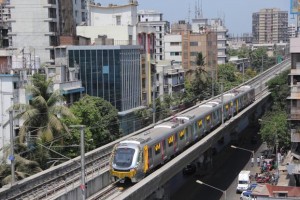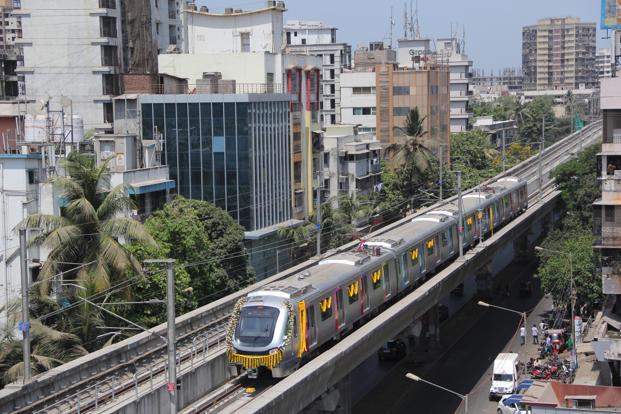 Track2Realty Exclusive: The built environment of Mumbai real estate for long has been busy with fixing the shortfall of the affordable housing. The debate has more often than not been centered on the three key processes that could lead to the availability of mass housing in a peninsular city where the availability of land remains the primary concern.
Track2Realty Exclusive: The built environment of Mumbai real estate for long has been busy with fixing the shortfall of the affordable housing. The debate has more often than not been centered on the three key processes that could lead to the availability of mass housing in a peninsular city where the availability of land remains the primary concern.
And hence, the discussion always revolves around the three critical issues—location, technology or policies. It is generally believed that locations beyond the Mumbai Metropolitan Region (MMR) can very well be utilised for affordable housing needs.
The outer stretch of the western suburbs like Dahanu, Palghar, Vasai, Naigaon, Vile Parle, and Santacruz are often referred as conducive to growth of affordable housing projects.
Analysts point out that with the quantum improvement Mumbai has seen in connecting various locations through infrastructural wonders over the last two decades, even outlying regions like these become desirable for residential development and may in fact prove to be the best bet for an affordable housing project. If the infrastructure is improvised and accessibility of the available land is created, this also will increase the affordable housing situation in Mumbai.
Another school of thought in the city suggests there are four primary approaches to handle the shortfall of affordable housing, all cantered on lowering the cost of construction, land, financing, operations and maintenance. Implemented individually, each of these approaches can significantly decrease the affordable housing gap in the city.
However, if implemented simultaneously and in tandem, they can reduce the cost of affordable housing in the country’s urban areas by 35-50 per cent and substantially decrease India’s affordable urban housing gap over the next ten years.
The most vital aspect remains unlocking land supply because land is the largest expense in real estate in general and even more so in the context of Mumbai. Making existing land in strategic locations of the MMR available for development of affordable housing is one of the feasible ways the available land parcels can be given at subsidised rates to the developers willing to opt for constructing affordable housing.
Similarly, the cost of construction of housing projects development could be reduced by over 30 per cent and the completion time shortened by over 40 per cent if the developers are encouraged and incentivised to start using the latest construction methods and standardized project designs (for instance, assembling housing structures from prefabricated components manufactured off-site). Process improvements such as efficient procurement methods would also substantially help to cut the cost of construction.
Construction experts point out that up to 20-30 per cent of housing costs go into maintenance and operations. Energy-efficient retrofits such as new windows and insulation can cut down these costs. Maintenance expenses can also be reduced if more developers tie up with qualified suppliers (through licensing and registration) and through consolidated purchasing. Similarly, lowering the financing costs for real estate developers and buyers can go a long way in helping banks and financial institutions to safely make and sell more home loans to lower-income home buyers.
Abhishek Kapoor, Partner, Neumec Group maintains that policies are the most crucial factor and affordability can be created where right policies framework is available. He points out how the city of Mumbai has seen SRA as a policy being done so far, both for rehabilitation homes along with creating affordable housing.
“Policies can be followed by technologies and then the location, which is when the improved rail / road infrastructure will create a higher stock of these. With high prices of land within the city, the low-income housing projects are developed at far-flung areas before immediate periphery with highly priced land parcel is developed. Boiling down on the most suitable location for the project is the most challenging task for the developer after which other facets like legal permissions, technology etc. procedurally fall into place,” says Kapoor.
On the attractive locations of affordable housing, Rohit Poddar, Managing Director of Poddar Developers says that along the western suburbs there are attractive locations that can be developed as case study of affordable zones. He believes for EWS and LIG locations like Palghar and Boisar are ideal while for MIG the Vasai-Virar belt is suitable.
“It is a combination of several factors that lead to the creation of affordable housing stock. It can be done by availability of land at affordable prices or with a cross subsidy scheme. Fast track clearances of all approvals is equally important. Infrastructure like MUTP (high frequency train services), roads, water and electricity connections need to be provided at a reasonable cost by the government. Good finance schemes by the finance companies and banks and finally a long term, honest mindset of the developer using fast speed and high quality construction technology can ensure affordable housing,” says Poddar.
Sachin Agarwal, CMD, Maple Shelters makes it a point to say that Mumbai is obviously not the only city which suffers from an affordable housing shortage. Even in other parts of the world, the lack of low-income homes is a problem and the cause of higher mortality, lack of security and self-respect and criminality. However, we have seen that other countries have responded more proactively to their indigenous low-income housing shortages than India.
“The success stories can be seen in the countries whose governments have acknowledged that home ownership is a powerful catalyst for social change in the lower income groups, and that making it available must be the highest priority in any country which displays high levels of socio-economic disparity. Developed countries like Germany and the UK as well as developing nations like China have distinct and well-formed housing programs for the lower income groups. These programs incorporate a number of elements that make it possible to achieve their objectives, and India can certainly take a page out of such case studies,” says Agarwal.
In conclusion, it can be vouchsafed that Mumbai can also succeed in creating the affordable housing for the masses, if only a multi-pronged pro-active efforts are made. Successful models that are being suggested include cross-subsidy schemes and also a PPP (Public Private Participation) model. Last, but not the least, in a city like Mumbai with complicated regulatory framework fast tracking of regulatory clearances specifically meant for affordable housing will go a long way.





